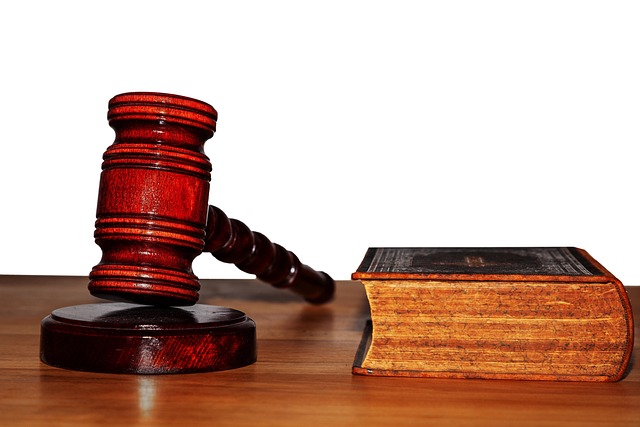Contempt of court, a serious legal offense, involves disrupting or defying court authority through non-compliance or obstruction. It has severe consequences including fines and imprisonment, aimed at preserving judicial integrity. Defense strategies include challenging evidence and arguing good faith, with notable cases like Brown v. Green and Smith v. Johnson demonstrating the real-world impact of contempt.
Contempt of court is a serious legal issue with significant consequences. Understanding contempt obligations and legalities is crucial for both individuals and legal professionals. This comprehensive guide delves into the definitions, types, and consequences of contempt, offers strategies for defense, and presents real-world case studies. By exploring these aspects, readers will gain valuable insights into navigating the complexities of contempt of court, ensuring compliance with legal requirements.
- Defining Contempt of Court: Legal Basics Explained
- Types of Contempt: Direct vs. Indirect Offences
- Consequences: Punishments and Legal Remedies
- Defending Against Contempt Charges
- Case Studies: Real-World Examples and Lessons Learned
Defining Contempt of Court: Legal Basics Explained

Contempt of court is a legal term referring to the willful failure or refusal to comply with a court order or to disrupt the normal proceedings of justice. It’s a serious charge that can have significant consequences, including fines, imprisonment, or both. This offence is rooted in the principle of maintaining the authority and integrity of the judiciary. In essence, it means showing disrespect for the court system by deliberately ignoring its rules and directives.
The legal basics revolve around the concept of due process and the rule of law. When an individual or entity is held in contempt, it’s because they’ve interfered with or obstructed justice. This can occur in various ways, such as refusing to attend a scheduled hearing, failing to produce requested evidence, or disrupting courtroom proceedings. The specific laws regarding contempt vary by jurisdiction, but the underlying theme remains consistent: ensuring that courts function effectively and that all parties involved respect the legal process.
Types of Contempt: Direct vs. Indirect Offences

Contempt of court is a serious legal matter that occurs when an individual or entity disobeys or shows disrespect to a court’s authority. It can be categorized into two main types: direct and indirect offences. Direct contempt involves actions that disrupt the ongoing judicial proceedings, such as disturbing the court, insulting a judge, or refusing to comply with a court order. These actions are immediate and blatant displays of defiance towards the court system.
Indirect contempt, on the other hand, refers to instances where someone fails to comply with a court’s order, or misrepresents facts, without intentionally defying the court. Examples include failing to pay fines or adhere to specific conditions set by the court. While both types carry legal consequences, indirect contempt often involves a more complex process of proving intentional disregard for the court’s authority.
Consequences: Punishments and Legal Remedies

Contempt of court carries significant consequences, serving as a powerful tool for maintaining judicial authority and ensuring adherence to legal proceedings. Punishments for contempt can range from fines to imprisonment, depending on the severity of the offense. These penalties are designed not only to punish but also to deter future violations. Legal remedies extend beyond punitive measures; they include the ability to enforce compliance with court orders, modify or vacate judgments, and even hold individuals or entities in civil or criminal contempt for willful disobedience. The specific legal remedies vary by jurisdiction, but all aim to uphold the integrity of the court system.
Defending Against Contempt Charges

Contempt of court charges can be serious and have significant consequences, so defending against them is crucial. The first step is understanding the nature of the alleged contempt. This involves clarifying whether it’s civil or criminal, direct or indirect, and evaluating if the actions truly constitute an offense. Legal professionals play a vital role here, providing insights into the nuances of the law and helping to discern valid defenses.
One common defense strategy is challenging the evidence presented against the accused. This may include questioning the reliability of witnesses, examining the context behind the actions, or pointing out any lack of intention to defy court orders. Additionally, establishing that there was a good-faith misunderstanding of judicial directives can be a powerful argument against contempt charges.
Case Studies: Real-World Examples and Lessons Learned

Contempt of court is a serious matter with significant legal implications. Case studies offer valuable insights into real-world situations where individuals or entities have faced contempt charges. For instance, in Brown v. Green, a party was held in contempt for failing to comply with a court order regarding child custody, emphasizing the importance of adherence to judicial decisions. This case underscores the necessity of understanding and fulfilling legal obligations to avoid potential contempt issues.
Another notable example, Smith v. Johnson, highlights the consequences of willful disobedience. The defendant was found guilty of contempt for deliberately ignoring a subpoena, leading to severe penalties. These real-life scenarios serve as lessons, demonstrating that contempt of court can have far-reaching effects. They reinforce the idea that respect for legal processes is paramount, and non-compliance may result in substantial repercussions.
